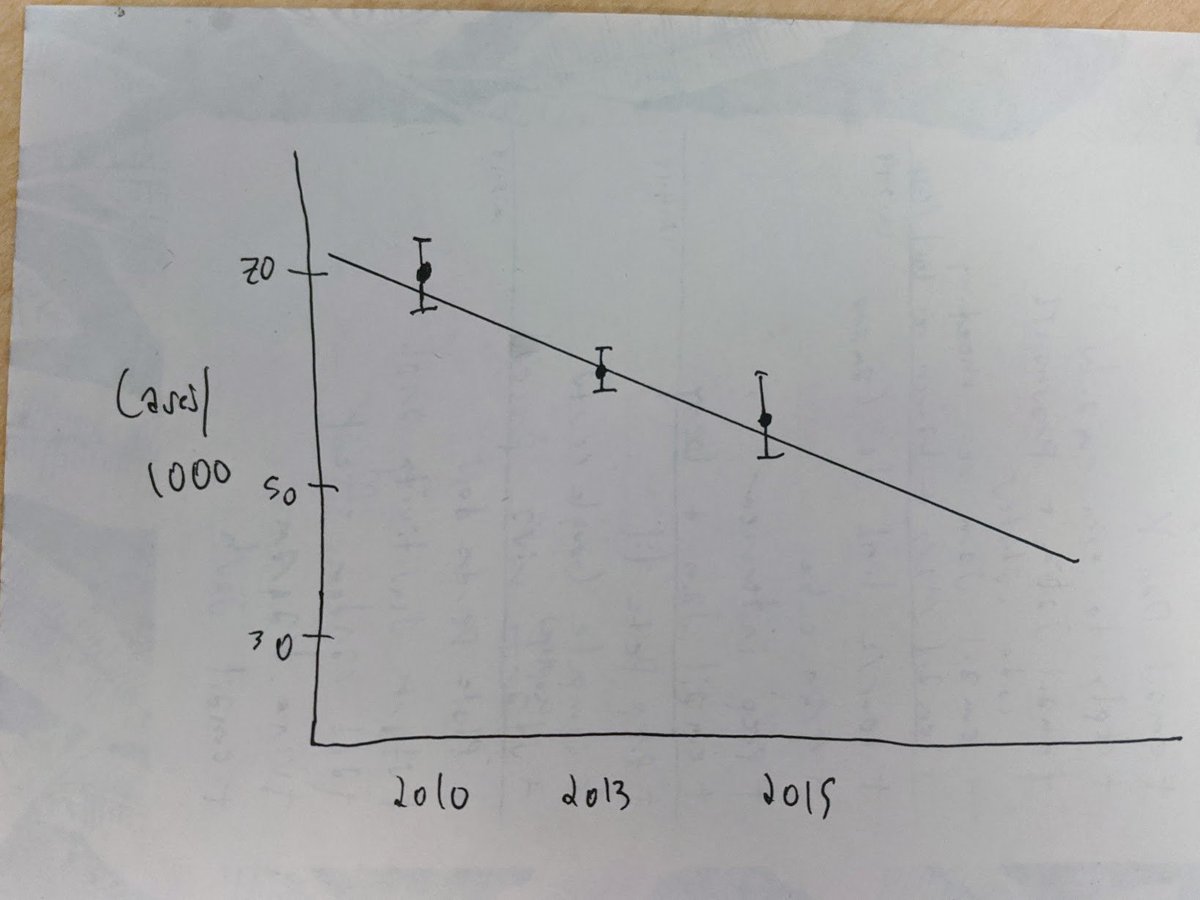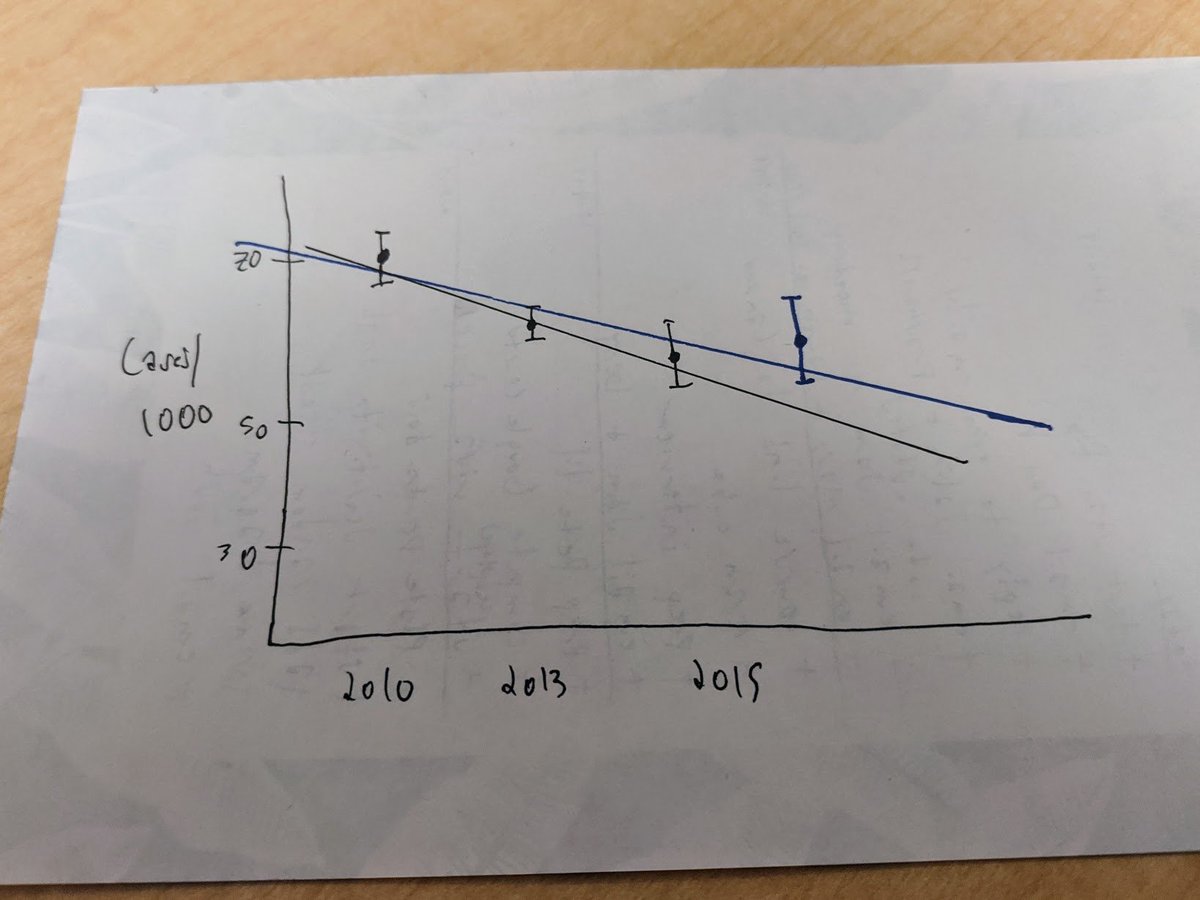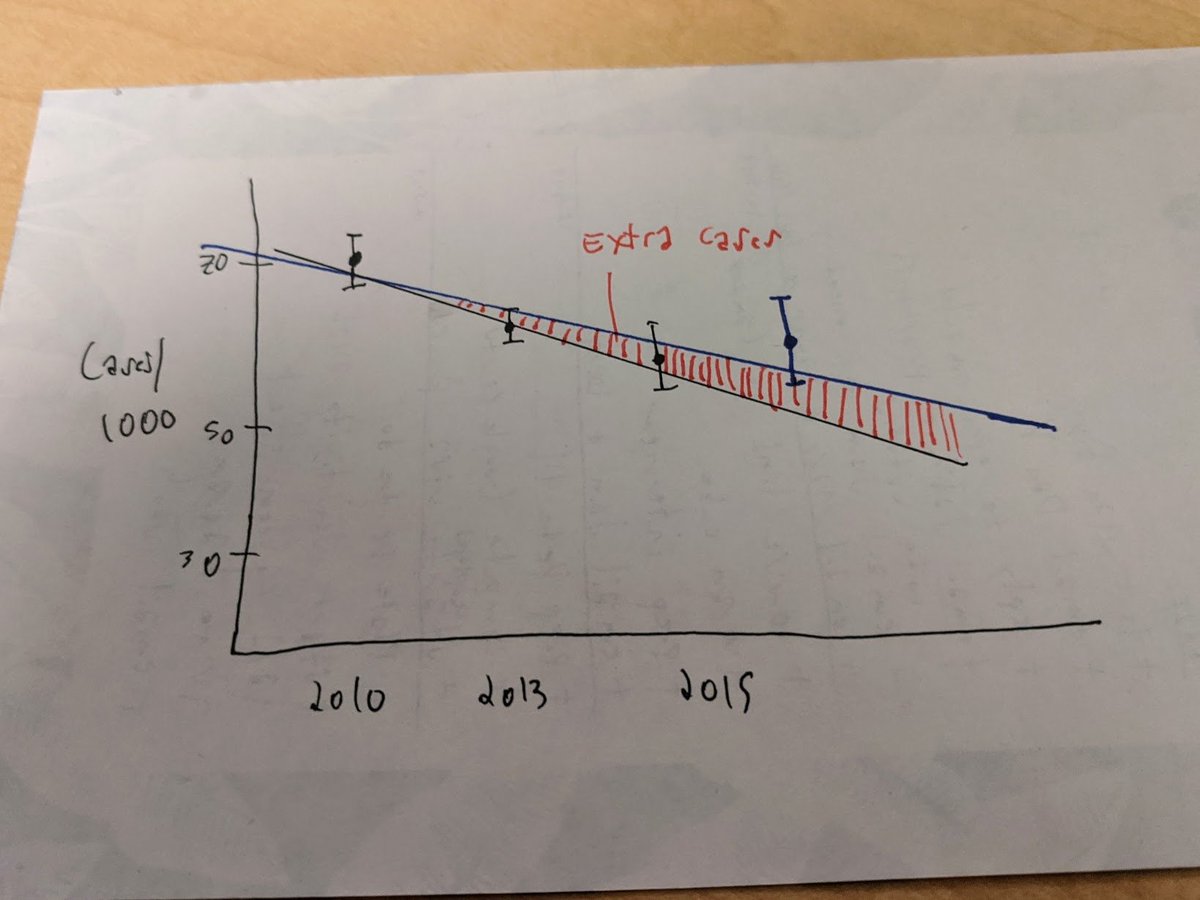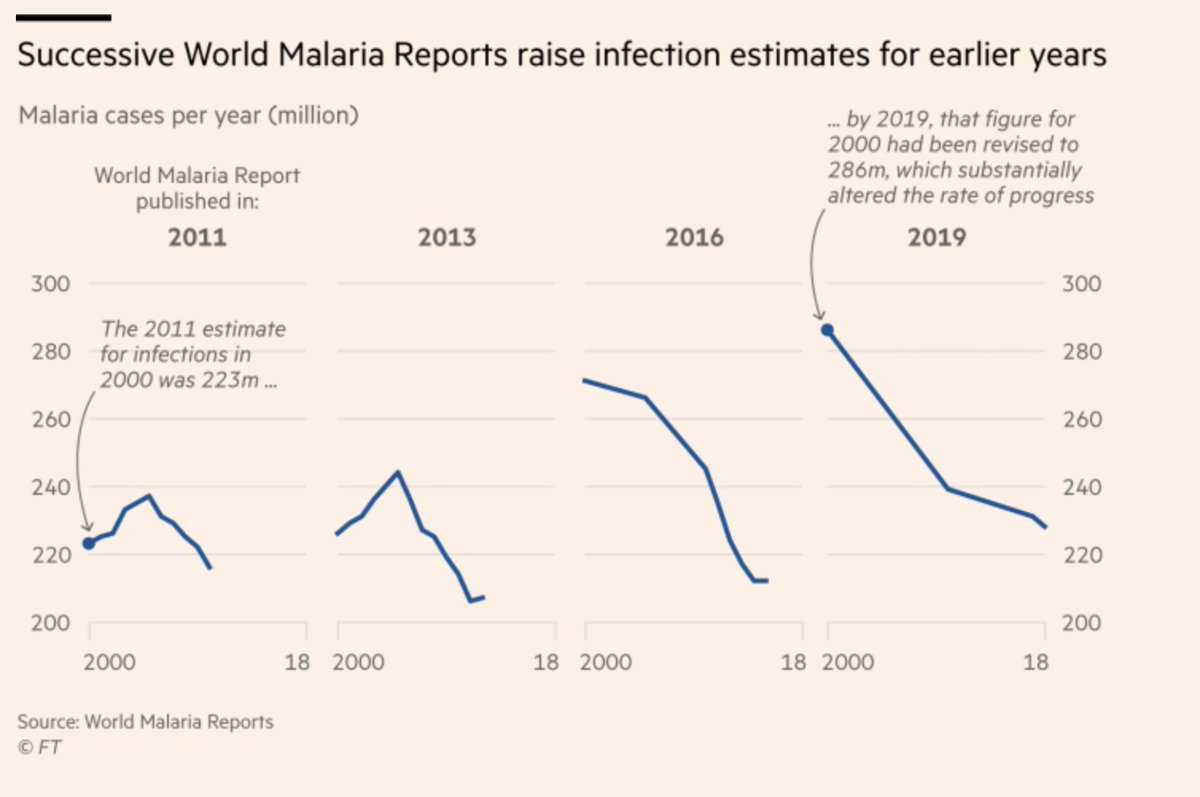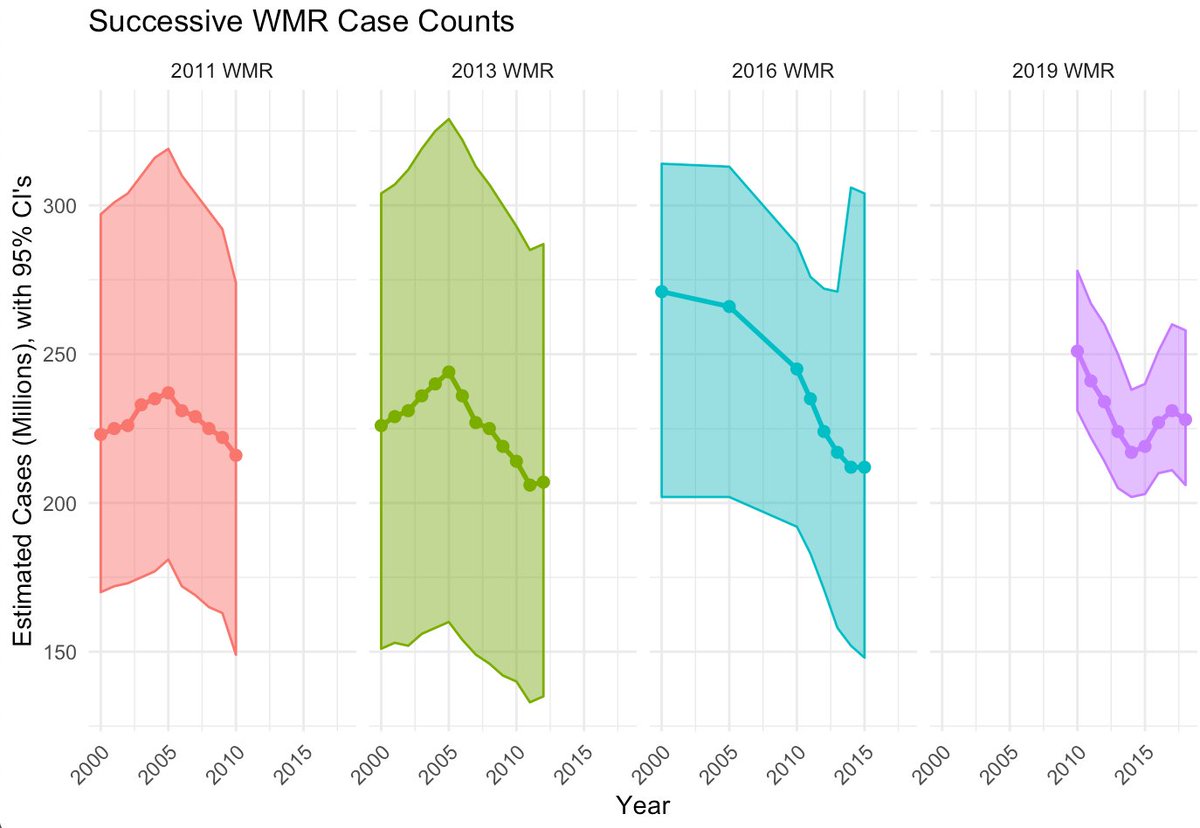1. We estimate X cases in 2018.
2. We estimate X cases (95% CI A-B) in 2018.
3. We estimate between A and B cases in 2018, with 95% confidence.
Only #3 highlights the most relevant values, while making clear that we *do not actually know* the case count.
